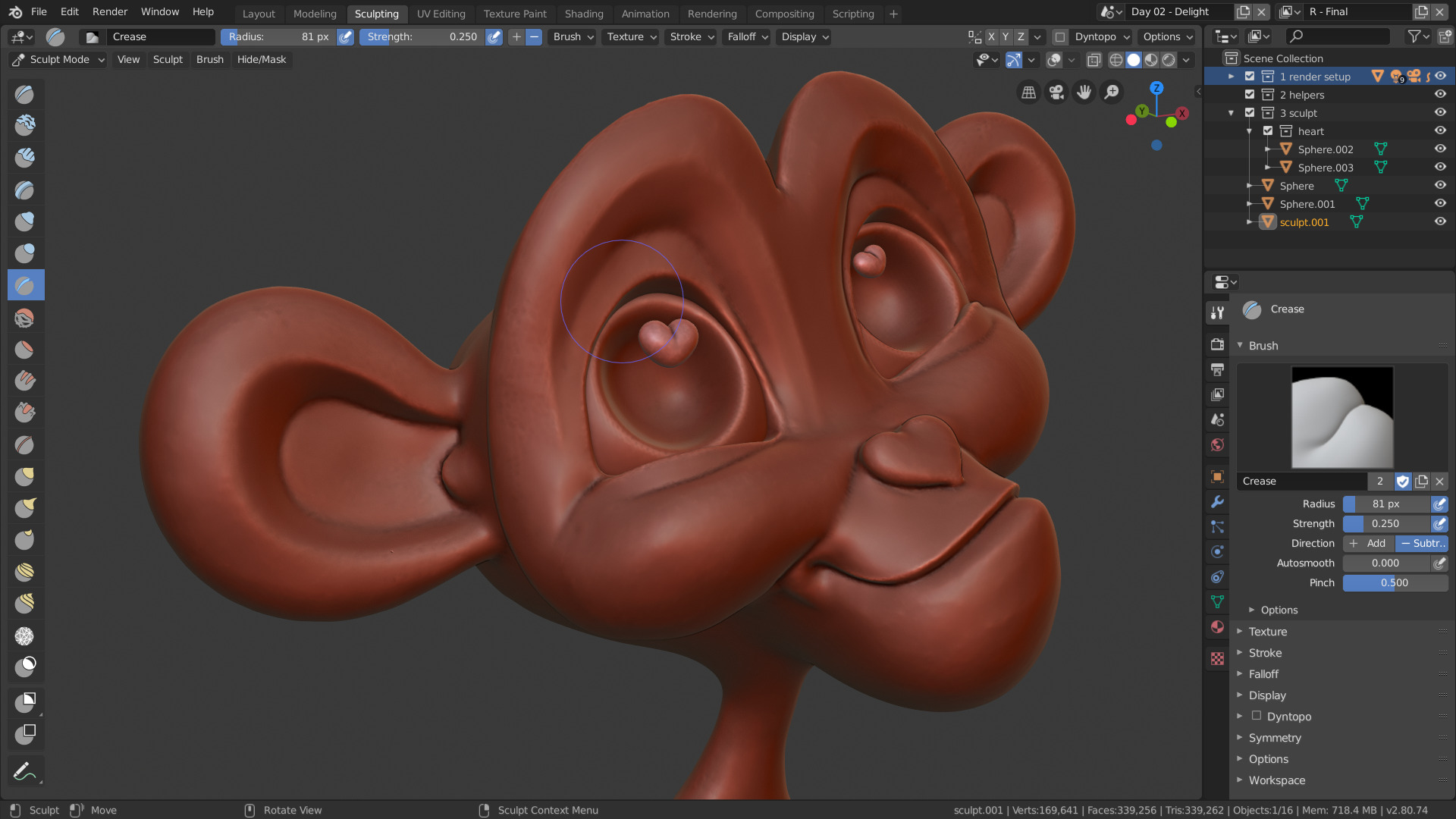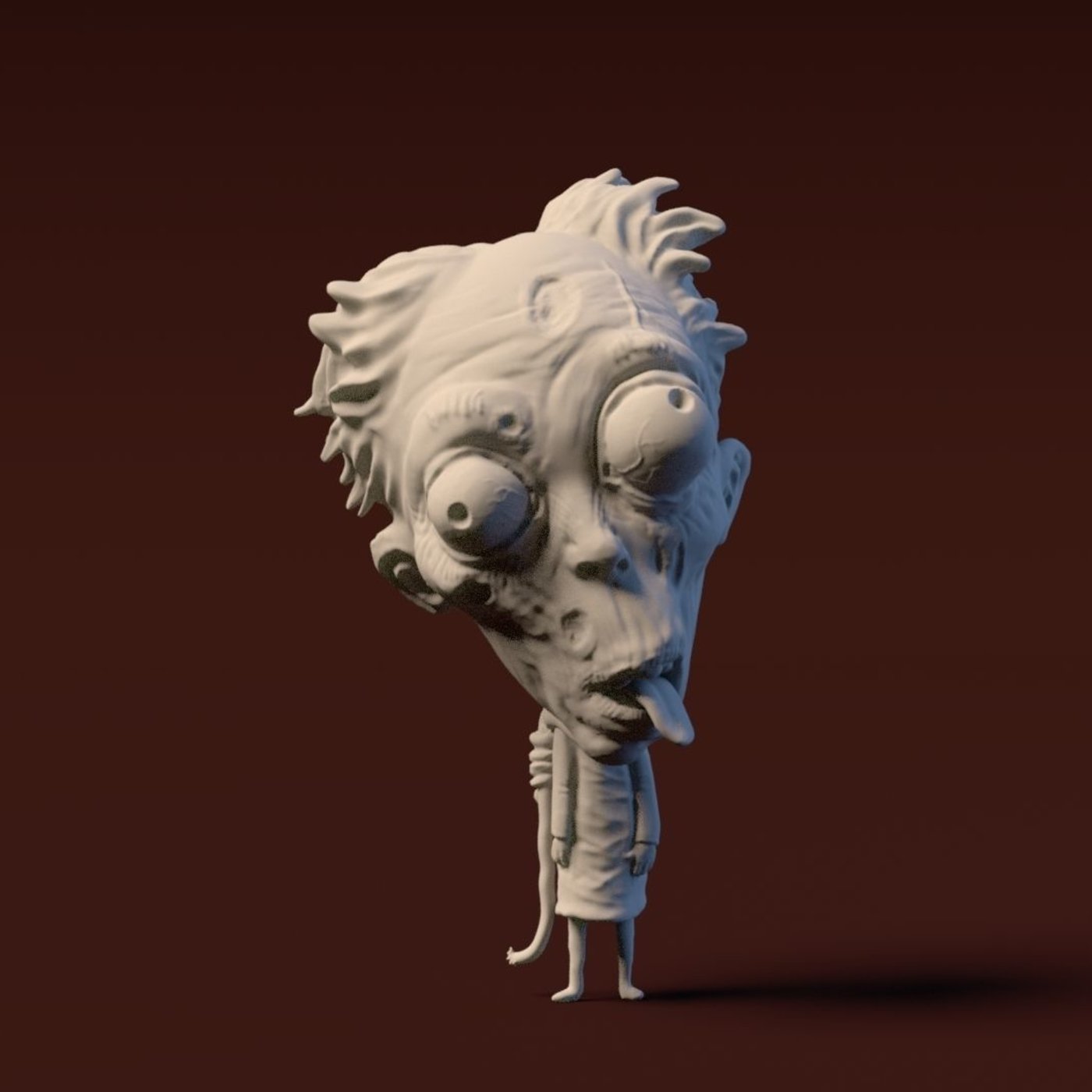

We'll be using a shark concept by artist Alyssa Veysey. From a digital ball of clay to an authentic 3D representation of 2D concept art. Together, we'll apply what we’ve learned by sculpting a shark. Once we learn what Blender can do, we'll move on to the most fun part: sculpting something awesome! So yes, not your usual short blender sculpting tutorial. We’ll overview each brush, each menu, masking tools, posing tools, stroke methods, brush falloff, symmetry and tiling, matcaps, dynamic topology, remeshing, blender key shortcuts.Yes, it’s a LOT but along the way, I will be emphasizing the most important things to know for someone getting started with Sculpting with Blender.
Blender sculpting how to#
This makes it an ideal technique for creating organic models, be it characters in blender or creatures.īlender's Sculpt ModeIn this course you will learn how to sculpt in blender, master all the essential sculpting tools and features of Blender 2.8 and higher. Compared to polygon modeling, which is sometimes referred to as “pushing and pulling vertices”, sculpting is far more artistically intuitive. Visit the Blender Tutorials main page for more Blender tutorials.Digital sculpting is a form of 3D modeling that aims to emulate traditional clay sculpting. It doesn’t matter in which order you delete all other previous keys. If you want to completely delete all Shape Keys and don’t need the ability to edit them anymore, delete the merged shape key last and all other shape keys first. This allows you to still go back and forth between your original mesh and the merged changes. Deleting unused keysĪfter you have created your merged key, you can safely delete all other previous individual keys, except for the Basis key. This key contains the combined topology changes from all other keys. You’ll get a new key with a default value of 0. If you want to edit the result of all your layers in Edit Mode, you have to merge your Shape Keys fist.Ĭlick on the small downward pointing black arrow button in the Shape Keys panel and select New Shape from Mix.

You’ll notice that when you switch to Edit Mode you can only see the changes of the Shape Key that you have currently selected, but not the final resulting mesh: To do the latter, select a Shape Key and press the button. You can fade your changes in and out or even delete a Shape Key entirely. I then selected Edges first, scraped off the major shapes of my cube, then selected Detail and added a bit of surface noise. In the following example I’ve created two shape keys and renamed them to Edges and Detail. You can now start editing your mesh, either in Edit Mode or with Blender’s sculpting tools.Ĭreate more Shape Keys for every type of detail you want to have in its own layer. Setting its value to 1 sets the key’s impact to 100%. Clicking on the Shape Key makes it active – all changes you make on the geometry of your mesh are now stored in this key. Select Key 1 and drag the Value slider from 0 to 1 (or click on it and enter 1). You’ll get two new entries in the Shape Keys menu: Basis and Key 1. Open the Shape Keys category and click two times on the button.


With your mesh selected, open the Object Data Properties (green triangle icon) in the vertical Properties panel on the right side of your 3D viewport. Your mesh should have the final topology you want to use before starting to sculpt, like this densely subdivided cube: Having a Multiresolution modifier makes using Shape Keys impossible. If your mesh uses a Multiresolution modifier, you need to apply it first. This tutorial explains how to use Shape Keys in Blender to create sculpting layers that can be toggled on or off or faded in and out.


 0 kommentar(er)
0 kommentar(er)
